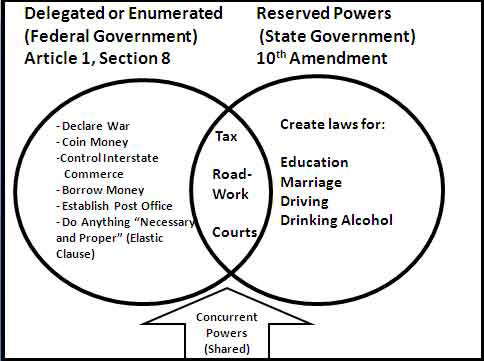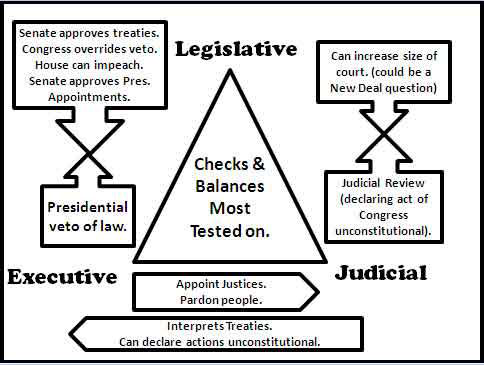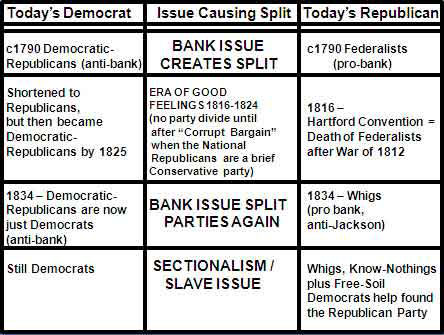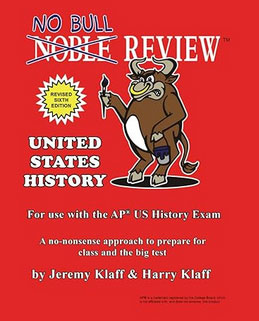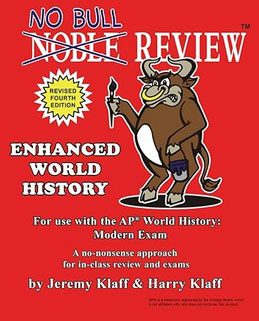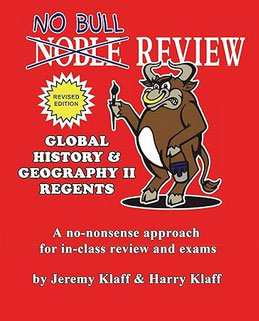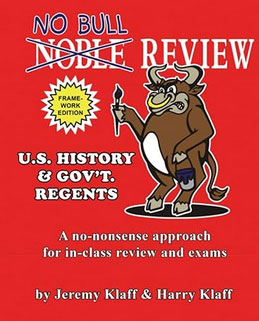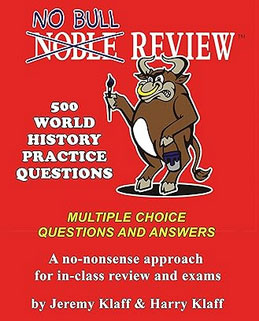|
|
|
 |
 
 |
 |
|
|
|
|
|
CLEP TEST US History Review Sheet and Flashcards
Part I is from 1500-1877
... Part II is from 1877-Present
Breakdown Part I = 30% 1500-1789, 70% 1790-1877 35% Political, 25% Social, 10% Economic,15% Cultural and intellectual, 15% Foreign Policy Break down Part II - 70% after 1915. 35% Social. 25% Economic. 10% Cultural/Intellectual. 15% Foreign Policy.
KEY CONCEPTS
(SCROLL TO BOTTOM FOR REVIEW SONGS / VIDEOS)
Bacon's Rebellion,
House of Burgesses,
Zenger Trial,
Great Awakening,
Bacon's Rebellion
Anne Hutchinson,
Halfway Covenent
Declaration of
Indepen
Indentured Servitude, Sharecropping, Homestead Act, femme covert, cult of domesticity, Jay and Pinckney Treaties, Transcontinental Railroad, Seneca Falls Convention, Fort McHenry, Elizabeth Cady Stanton,
Part II Mugwumps ... Mugwumps, Knights of Labor, AFL, Pendleton Act, Mother's pensions, Settlement Houses, Triangle Fire, William Jennings Bryan, Dawes Act, Cross of Gold, Populism, Granger Movement, 16:1, Conservation, Trustbuster, Ballinger-Pinchot, John Muir, Sherman and Clayton Antitrust Act, Red Scare (Palmer Raids), Lusitania, Zimmerman Note, Treaty of Versailles Ratification, Scopes Trial, Harlem Renaissance, Susan B. Anthony, Charles Lindbergh, Coney Island, Sacco and Vanzetti, Flapper, Scopes Trial, Stockmarket Crash, Margin, Open Door Policy / John Hay, Art Deco, Relief Recovery Reform, AAA, SEC, CCC, WPA, PWA, Social Security, TVA, NIRA, NRA, Social Security, Court Pack, Huey Long, Shirtwaist Triangle Fire, FDIC, Neutrality Acts, Bases for Destroyers, Cash and Carry, D-Day, Island Hopping, Manhattan Project, Japanese Internment, War Bonds and Taxes to beat the Axis!, Prohibition and Bootlegging, Good Neighbor Policy, Al Capone, Truman Doctrine, Containment, Atlantic Charter, UN, Marshall Plan, U2, Rosenbergs, McCarthyism, NATO and Warsaw Pact, Ike, The New Frontier (JFK), The Fair Deal (Truman), The Square Deal (TR), The New Deal (Duh) ... Pearl Harbor, D-Day, Truman fires MacArthur, detente, Little Rock, SALT, Iran-Contra, Miracle on Ice, Iran Hostage Crisis, Star Wars (SDI), Secret Testing, Gulf of Tonkin, Tet Offensive, Bank Holiday, Taft-Hartley Act (restricting unions), Watergate, Nixon and ping pong diplomacy, Great Society, Clinton and Nato, NAFTA, Reaganomics, stuff that happened in your lifetime. HamiltonHamiltonHamiltonHamiltonHamiltonHamiltonHamiltonHamilton
MAJOR THEMES PART I
Wha What role did religion play in the colonies? The Pilgrims were separatists, Puritans are non-separatists. The way you remember this is: on Thanksgiving (Pilgrims) you separate your turkey from your stuffing and cranberry sauce. Separatists disassociated themselves from the King of England who was the head of the Church of England.
What were the weaknesses of the Articles of Confederation? What were the major Compromises of the Constitution? Why did America want Independence? What did the Declaration of Independence actually say? How do the branches of government check one another? What was Washington’s stance on foreign policy? What were the major events of the War of 1812? I can think of more than one. How did America expand during manifest destiny? You may want to know about certain ... important ... Civil War ... Battles, and facts. What were the causes of the Civil War? What part did slavery play in it? Know your compromises! (see below) What were the major issues under "Jacksonian Democracy." Hint: Tariff, Bank, Nominating Conventions, Spoils System, Trail of Tears, Specie Circular, Ordinance of Nullification, Force Bill. (Perhaps that was more than a hint.) What's the deal with Federalist #10?
PART II How did the United States deal with Native Americans from colonial days to the Gilded Age? How did women affect social movements? Westward Expansion -- Know the Turner Thesis, Homestead Act, and the plight of Native Americans during manifest destiny. What happened during the Gilded Age concerning "Robber Barons" and industrialization? What were some of the cultural innovations of the Roaring 20s? Sports, Music, etc. Why did immigrants move towards cities? How did the cities emerge? How did Populists influence the Progressives? What were the Progressive Reforms? All of the Progressive Reformers you need to know. Rachel Carlson's Silent Spring comes up all the time. It's a book about environmentalism. Why was it called the Roaring 20s? What were the causes of the Great Depression, and the solutions implicated by the New Deal (RRR)? How did we move away from Neutrality during WWII? How was WWII a Glorious War? What were the major clashes of the Cold War? How did different generations of Americans clash during the 60s and 70s? How did segregation come to an end? What impact did the Warren Court have? Know all about the turbulent Civil Rights Era, and the importance of Dr. Martin Luther King Jr.
Marbury v. Madison = Judicial Review McCullough v. Maryland = Federal Supremacy, and the right to charter a bank. "The Power to Tax is the Power to Destroy!" Dred Scott v Sanford = Roger B. Taney says that slaves are property. Muller v. Oregon = Limits hours women can work. Adkins v. Children's Hospital = refutes Muller decision Schenck v. US = "Clear and Present Danger" Can't shout "FIRE!!!!" in a crowded theater. Schecter v. US - Declares the NIRA Unconstitutional Butler v. US - Declares AAA Unconstitutional
Korematsu v. US = Japanese Internment is Constitutional as Executive Order 9066 states that in times of War, rights can be limited. Plessy v. Ferguson = Justifies Jim Crow laws. Brown v. Board of Education of Topeka KS - Ends segregation in schools. Roe v. Wade = legalizes abortion, but not in all cases. Dennis v. US - Due process limited because of a fear of Communism. Similar to "clear and present danger" mentioned above. Miranda v. Arizona, Gideon v. Wainwright, Mapp v. Ohio = rights of the accused. Charts for Federalism and Checks and Balances
COMPROMISES Constitutional = The Great Compromise (Virginia (bicameral on population) vs. NJ Plan (equal representation), 3/5 Compromise, and Commercial Compromise. Civil War: Missouri Comp, Comp of 1850, K-N Act (KNOW THESE PROVISIONS WELL) 1820 - Missouri is a slave state, no slavery north of 36'30, Maine is a free state. -- Henry Clay.
Political Parties Federalist --> Whigs --> Republicans (Free Soilers and Know Nothings unite here) Democrat-Republicans --> National Republicans (era of good feelings) --> Democrats
TARIFFS TO KNOW 1. 1828 Tariff of Abominations (and Compromise Tariff) 2. Underwood Tariff of 1913 - Democrats regain office and decrease the tariff rates. 3. Hawley Smoot Tariff of 1930 = Raised tariffs to highest point since the Tariff of Abominations. This was done mostly to protect the agriculture industry. D ... DEMOCRATS, TARIFFS GO DOWN, HELP Dee POOR, Deep or Solid South. R ... Republicans, Raise Tariffs, Less Taxes for the Rich, Favor Railroads and Robberbarons. Also comprise the Religious Right. Remember -- when Democrats are in office, tariffs typically go down. When Republicans are in office, tariffs typically go up. Tariffs eased after WWII.
AFL AND KNIGHTS OF LABOR BAGS (Bread Butter Issues /AFL / Gompers / Skilled KUPS (Knights / Unskilled / Powderly / Strike more ... (Unskilled spellers can't spell cups!)
HAMILTON VS JEFFERSON MNEMONIC DEVICE ... BLAPS SACS Hamilton = favors national Bank, Loose interpretation of the Constitution, an Army, the Propertied and rich, and a Strong central government ... BLAPS Jefferson favors State rights, Agriculture, the educated and Common man, Strict interpretation of the Constitution. SACS
Presidential Slogans ... TR (Rep) = A Square Deal for Americans! Support consumers over trusts. Woodrow Wilson (Dem) = New Freedom (defeats TR's New Nationalism) and trustbusts with even more tenacity! Warren G. Harding (Rep) = Return to Normalcy post WWI FDR (Dem) = The New Deal - Public Works, and Government Economic influence Truman (Dem) = A Fair Deal - social improvement, and healthcare. Eisenhower (Rep) = Dynamic Conservatism. The 1950s = A conservative time, economically (Gov supports Big Business), politically (McCarthyism), and socially (Women at home, Leave it to Beaver) JFK (Dem) = The New Frontier, liberal problem solving for poverty, racial prejudice, and international aid. LBJ (Dem) = The Great Society - Money to the poor, education, and an end to discrimination.
THESE WOMEN ARE IMPORTANT TO KNOW Betty Friedan was a feminist who wrote The Feminine Mystique. She supported equal rights for women, and was the first president of the National Organization for Women (NOW). Phyllis Schlafly was opposed to modern feminism. She was outspoken against the ERA (Equal Rights Amendment). So...Betty wanted women to be FREE (Friedan), Phyllis wanted to give them the Shaft (Schlafly).
Memory Palaces are a new way to review US History! Check them out! (will open to www.pixorize.com)
Click here for the APUS History Review Song.
The Presidents Song, by The Social Studs
The Causes of the Civil War Music Video, by the Social Studs
Checks and Balances Song
Just for fun ... CAPITALS OF THE STATES! By the Social Studs
Click here for the APUS History Review Song!
LINKS TO LATEST EDITIONS OF NO BULL REVIEW ... AP US History AP World History Global 2 Regents US History Regents
Toiletrivia: Bathroom Trivia Books in Print and Kindle
Mr. Klaff's Time Travel Book for Middle School Readers!
AP® and SAT Subject Tests™ are trademarks registered and/or owned by the College Board, which was not involved in the production of, and does not endorse, this website.
|
|





